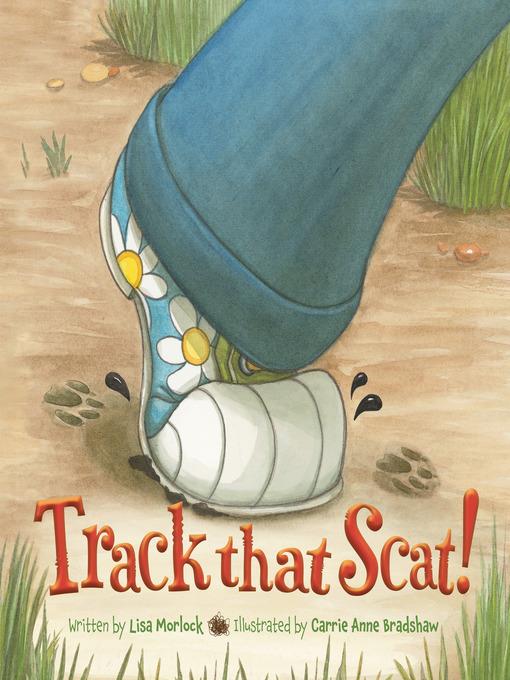
Track that Scat!
فرمت کتاب
ebook
تاریخ انتشار
2016
Reading Level
2
ATOS
3.8
Interest Level
K-3(LG)
نویسنده
Carrie Anne Bradshawناشر
Sleeping Bear Pressشابک
9781410310118
کتاب های مرتبط
- اطلاعات
- نقد و بررسی
- دیدگاه کاربران
نقد و بررسی

April 23, 2012
Stepping in animal poop is rarely cause for celebration, but it is for a girl named Finn in a story that invokes not one, not two, but three meanings of the word “scat.” On a wildlife walk with her basset hound, Finn introduces her brand-new sneakers to a potpourri of animal scat: “Three-toed web prints grouped together./ Nearby floats a long tail feather./ With one trop-plop, Finn’s foot goes splat./ Oh no! She steps into... goose scat!” Morlock describes each animal’s habits and excrement in (extremely) detailed paragraphs: “Rabbits eat their own poop. When the scat comes out the first time, it’s in soft, moist pellets.” In addition to Bradshaw’s more fancifully painted spreads, the animals’ tracks and scat are depicted as they might appear in an animal identification guide. Nature-minded readers who are more careful than Finn about watching where they step will find plenty of information about what animals leave on the forest floor. Ages 4–8.

May 1, 2012
K-Gr 2-If the need arises to teach children how to identify wild animal scat, start with this picture book. A simple story in rhyme introduces Finn and her dog, Skeeter, as they track wild creatures through the woods surrounding their house. "Finn slows below a chickadee/that's singing in a maple tree./The bird takes flight. Finn feels a splat./New boots are blotched by songbird scat." Invariably, she steps in the scat each creature has left behind. Three paragraphs about each animal, among them a Canada goose and raccoon, offer facts, including a description of its sounds and the shape of its tracks and scat. The large spreads are inviting, and the dog, a basset hound, is cute, cute, cute, and the gross factor is likely to draw kids in.-Stephanie Farnlacher, Trace Crossings Elementary School, Hoover, AL
Copyright 2012 School Library Journal, LLC Used with permission.

April 15, 2012
Grades K-3 For young Finn and her hound, Skeeter, exploring the outdoors becomes a somewhat pungent adventure and a vehicle to introduce readers to identifying commonly known animals through their tracks and, particularly, droppings. From the onset, the pair encountersand sometimes steps ina progression of animal excrement: With one trip-slip, Finn's foot goes splat. Oh no! Right into . . . rabbit scat! Further encounters include goose, raccoon, and bird poop. Back at home, Finn's nose-pinching mom discovers the source of the horrendous smell: Finn's footwear. This picture book's bouncy rhymes, humor and puns, and colorful, cartoonish illustrations keep things on the lighter side. Straightforward supplemental information on each animal relates characteristics and behaviors while also further detailing track traits and scat habits. The squeamish might balk at times (rabbits eat their own poop; skunk scat can have insect wings, legs, and other parts sticking out ), and some may wonder why Finn doesn't become more observant about where she treads. A preface includes definitions of the word scat.(Reprinted with permission of Booklist, copyright 2012, American Library Association.)

























دیدگاه کاربران